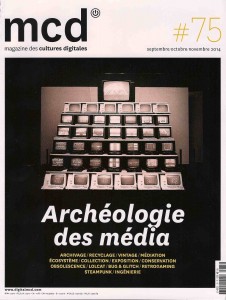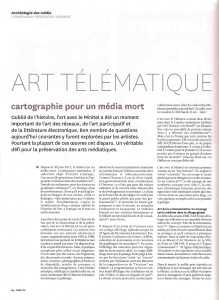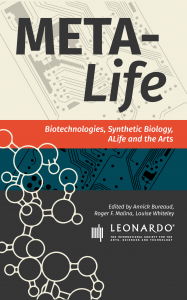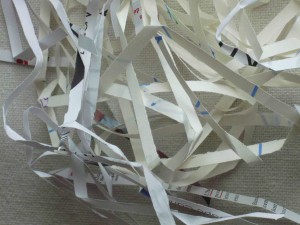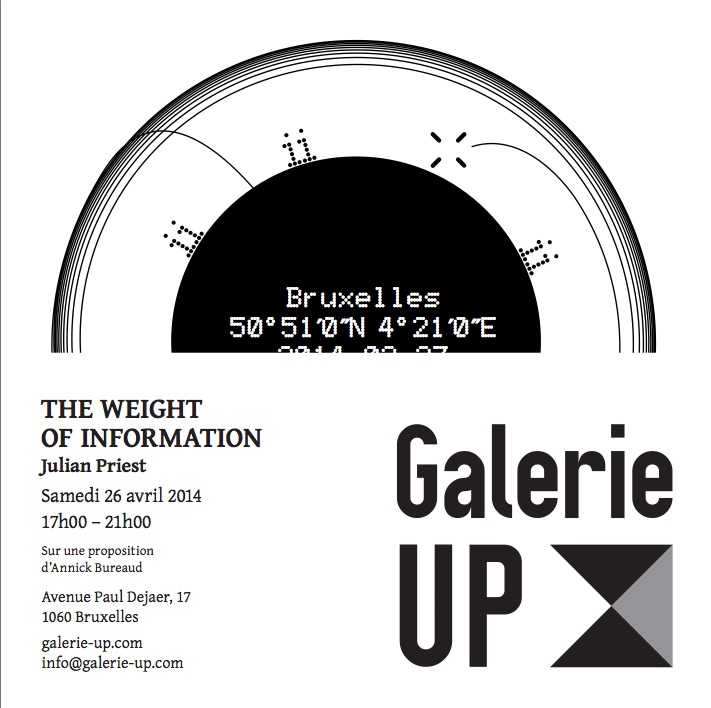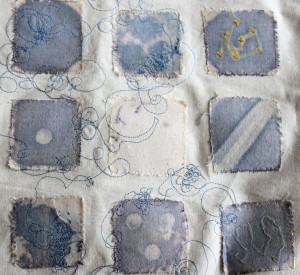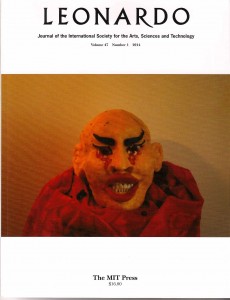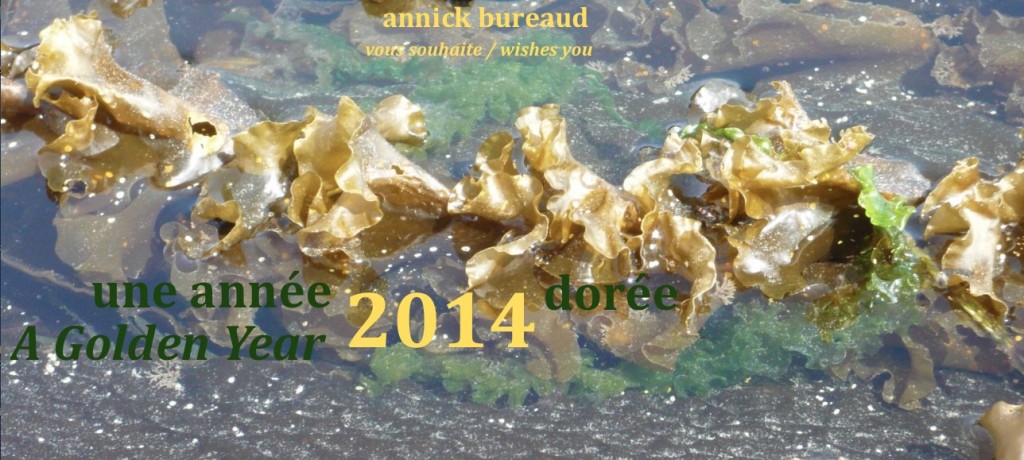Catégories
- Annick's News (94)
- Blog (145)
- Anouncement (58)
- Art & Non Human (20)
- Art-Science (80)
- CCP/Creating Curating Publishing (20)
- Entendu / Heard (1)
- Lu / Read (1)
- Nuage – Cloud (1)
- Space Art (19)
- Vu / Seen (26)
- Conference (49)
- Conf-organisation (16)
- Conf-participation (34)
- Enseignement/Teaching (1)
- Ethique (10)
- Exposition/Curation (21)
- Publications (58)
- Articles (39)
- Etudes/Reports (2)
- Livres/Books (15)
- Thèmes-Topics (130)
- 3D printing (3)
- Art & Non Human (19)
- Art numérique (2)
- Art-Science (77)
- BioArt (28)
- CCP/Creating, Curating, Publishing (10)
- Digital Art (12)
- Drone (1)
- Environmental Art (13)
- Ethics (13)
- Extreme Environment (7)
- History (6)
- Net Art / Cyberspace (7)
- Smart Clothing (1)
- Space Art (33)
- Virtual Reality (2)
- Unclassified (6)
Liens
-
Articles récents
- 2025, que ce nouveau tour autour du soleil soit inventif, créatif et pacifique
- « Venus Conversations 2024-2034″, Launch Event London 23rd November 2024
- « Space Shelter Earth », Romanian Research Trip, Autumn 2024
- Impressions Ars Electronica 2024 (HOPE)
- « Space Feminisms » à la Gaîté Lyrique, mardi 26 mars, 19h00
Art télématique. Cartographie pour un média mort – MCD #75
Mon article Art télématique. Cartographie pour un média mort est paru dans le numéro 75 de MCD de l’automne 2014 consacré à l’archéologie des médias.
La photo de l’installation de minitels d’ART-ACCES fait la couverture.
Publié dans Annick's News, Anouncement, Articles, Blog, History, Net Art / Cyberspace, Publications
Marqué avec archéologie des médias, art télématique, ART-ACCES, David Boeno, Fred Forest, Frédéric Develay, Jean-Claude Anglade, Marc Danjean, MCD, media archeology, Minitel, Minitel Art, Olivier Auber, ORLAN
Laisser un commentaire
Etudes et cahiers de tendance
Cette année, j’ai réalisé deux études (cahiers de tendance) pour Décalab
- BioArt – Bio Design. Concevoir pour l’anthropocène (mars 2014)
- Impression 3D. Quand le virtuel s’incarne dans le réel ou la sculpture sans les mains (juillet 2014)
D’autres sont en préparation.
Publié dans Annick's News, BioArt, Digital Art, Etudes/Reports
Marqué avec 3D printing, BioArt, biologie de synthèse, Synthetic biology
Laisser un commentaire
META-LIFE: Biotechnologies, Synthetic Biology, A-Life and the Arts
It is my great pleasure to announce the publication of the Leonardo – MIT Press ebook Meta-Life. Biotechnologies, Synthetic Biology, ALife and the Arts that I co-edited with Roger Malina and Louise Whiteley.
It is a real « mammoth »: 45 articles – 691 pages (not sure how you count an electronic book pages but if Amazon and MIT Press say so, we believe them!) and all that for the price of a bottle of sparkling water in a Parisian brasserie, that is 8.23 US $ (yep ! I paid 6 € for one recently …). But more seriously, here a short text of presentation of the book and its table of content.
META-LIFE: Biotechnologies, Synthetic Biology, A-Life and the Arts
A Leonardo-MIT Press e-book edited by Annick Bureaud, Roger Malina and Louise Whiteley
Editorial Committee: David Benqué, Annick Bureaud, Oron Catts, Matthew Gardiner, Roger F. Malina, Nell Tenhaaf, Ruth West, Louise Whiteley
AMAZON URL: http://www.amazon.com/dp/B00LI69BQO
An exo-life may not come from outer space hiting the Earth riding a meteorite but very well from the lab, designed by a scientist —unless it is an artist— weaving biology and computing in a petri dish or a bioreactor as a vessel.
With biotechnologies, synthetic biology and Artificial Life, artists have opened new avenues in the artworld, going from still to autonomous objects to living creatures, exploring the thin border between animate and inanimate, confronting the grown, the evolved, the born and the built, raising aesthetical but also social, political and ethical issues.
In this ground breaking collection, the editors have commission new original essays by key figures in these fields and collected over 40 articles previously published in the Leonardo Journal that document the ideas and practice of artists involved in these areas as well as theoreticians and historians.
Chapters include: Between Bio, Silico and Synthetic: Of Life and Arts; Artificial Life and the Arts; Bioart; Bio-Fiction, Design, Architecture; DIY Biology-Biohacking (see below for full Table of Contents).
This ebook has a web companion
The Meta-Life e-book is a project by Leonardo/Olats as an outcome of the European Studiolab Project ), supported by the European Commission Seventh Framework Programme, in partnership with Leonardo/ISAST and MIT Press and in collaboration with ATEC at the University of Texas at Dallas.
Table of Contents
Preface, Roger Malina, Meta-Life: « Aha » Moments That Drive Art-Science
Introduction, Annick Bureaud, « Art at the Future Tense »
1 – Between Bio, Silico and synthetic: of Life and arts
– Nell Tenhaaf, « “Trust Regions” for Art/Sci », 2014
– Oron Catts & Ionat Zurr, « Countering the Engineering Mindset: The Conflict of Art and Synthetic Biology, 2014
– Amy M. Youngs, « The Fine Art of Creating Life », 2000
– Michael John Gorman, « The Sweet Smell of Synthetic Biology, GROW YOUR OWN… Life After Nature, at Science Gallery », 2014
– Matthew Gardiner & Al. « Project Genesis: Ars Electronica », 2014
2 – ARTIFICIAL LIFE AND THE ARTS
2.1 – ALife – At the Crossroad of Art, Science and Philosophy
– Nell Tenhaaf, « As Art Is Lifelike: Evolution, Art, and the Readymade », 1998
– Edward A. Shanken, “Life as We Know It and/or Life as It Could Be: Epistemology and the Ontology/Ontogeny of Artificial Life », 1998
– Kenneth E. Rinaldo, “Technology Recapitulates Phylogeny: Artificial Life Art”, 1998
– Ursula Huws, “Nature, Technology and Art: The Emergence of a New Relationship?”, 2000
– Mark Bedau, “The Scientific and Philosophical Scope of Artificial Life”, 2002
– Alvaro Moreno, “Artificial Life and Philosophy”, 2002
2.2 – ALife – Artworks
– Sommerer Christa, Mignonneau Laurent, “Art as a Living System: Interactive Computer Artworks”, 1999
– Ray Thomas S., « Aesthetically Evolved Virtual Pets », 2001
– Jane Prophet, “Sublime Ecologies and Artistic Endeavors: Artificial Life and Interactivity in the Online Project TechnoSphere”, 1996
– Bruce Damer, “The Cyberbiological Worlds of Nerve Garden: A Test Bed for VRML 2.0”, 1998
– Kusahara Machiko, « The Art of Creating Subjective Reality: An Analysis of Japanese Digital Pets », 2001
– Anna Dumitriu and Blay Whitby, “Cybernetic Bacteria 2..0, 2011
– Nell Tenhaaf, « Art Embodies A-Life: The VIDA Competition », 2008
3 – BIOART
3.1 – BioArt – Creating with Living Matter
– Adam Zaretsky, « Viva Vivo! Living Art Is Dead”, 2004
– Steve Tomasula, “Genetic Art and the Aesthetics of Biology”, 2002
– George Gessert, “Bastard Flowers”, 1996
– Suzanne Anker, “Gene Culture: Molecular Metaphor in Visual Art”, 2000
3.2 – BioArt – Creations
– George Gessert, “Notes on Genetic Art”, 1993
– Eduardo Kac, “GFP Bunny”, 2003
– Marta de Menezes, “The Artificial Natural: Manipulating Butterfly Wing Patterns for Artistic Purposes”, 2003
– Catts Oron, Zurr Ionat, « Growing Semi-Living Sculptures: The Tissue Culture & Art Project », 2002
– Catts Oron, « Not Moving – Living », 2014
– Tagny Duff, Jill Muhling, Maria Grade Godinho and Stuart Hodgetts, “How to Make Living Viral Tattoos”, 2011
– Patricia Noronha, “Yeast Biopaintings: Biofilms as an Artistic Instrument”, 2011
– Polona Tratnik, “37°C: From the inside of a Being to the Thin Line of Life”, 2005
– Zurr Ionat, « The Animation of Lab-Grown Life: Tissue Engineered Muscle Actuator (TEMA) », 2014
– Julie Clarke, “Corporeal Mélange: Aesthetics and Ethics of Biomaterials in Stelarc and Nina Sellars’s Blender”, 2006
– Pelling Andrew E., « Re-purposing The Behaviour and Motion of Living Cells in an Anti-Disciplinary and Curiosity-Driven Context », 2014
– Hilton Craig, « The Immortalisation of Billy Apple®: An Art-Science Collaboration », 2014
– Tony Bellaver, “Teaching Nature How to Become Nature: The Woodland Recovery Project”, 1998
4 – BIO — FICTION, DESIGN, ARCHITECTURE
– Judy Malloy, « OK Research, OK Genetic Engineering, Bad Information: Information Art Describes Technology, 1988
– Tran T. Kim-Trang and Karl Mihail, “Gene Genies Worldwide », 2003
– David Benqué, « Blueprints for the Unknown, Questioning the « Design » of Life », 2014
– Dennis Dollens, “Architecture as Nature: A Biodigital Hypothesis”, 2009
– Bakke Monika, « Living (On) Dust: Around the Globe with Mineral Particles & Microbial Hitchhikers », 2014
5 – DIY BIOLOGY – BIOHACKING
– Morgan Meyer, « Hacking Life? The Politics and Poetics of DIY Biology », 2014
– Alessandro Delfanti, « Is Do-It-Yourself Biology Being Co-Opted by Institutions? », 2014
– Denisa Kera, « Do-It-Yourself biology (DIYbio): Return of the Folly of Empiricism and Living Instruments », 2014
– Nurit Bar Shai, « GenSpace, New York, Art & Science at Genspace, Brooklyn’s Community Biotech Lab », 2014
– Cathal Garvey (interview by David Benqué), 2014
Publié dans Annick's News, Art-Science, BioArt, Livres/Books, Publications, Thèmes-Topics
Marqué avec A-Life, Annick Bureaud, Artificial Life, bio art, bio hacking, BioDIY, biologie de synthèse, DIY, Louise Whiteley, roger malina, Synthetic biology
Laisser un commentaire
Water is in the Air: Physics, Politics and Poetics of Water in the Arts
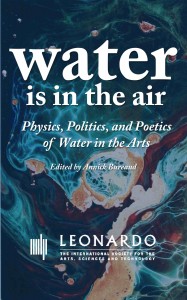 J’ai le plaisir d’annoncer la parution de l’ebook Water is in the Air que j’ai coordonné pour la collection Leonardo à MIT Press.
J’ai le plaisir d’annoncer la parution de l’ebook Water is in the Air que j’ai coordonné pour la collection Leonardo à MIT Press.
Water is in the Air: Physics, Politics and Poetics of Water in the Arts
Annick Bureaud (Ed.), Leonardo/ISAST, MIT Press, Leonardo ebook series, Kindle Edition, February 2014
ISBN: 9780262757010
http://tinyurl.com/Leonardo-Water
This ebook explores the ways that artists, from all over the world, working at the cutting edge of science and engineering, create work that addresses critical issues of water in culture and society. Drawing on thirty years of work documented in the Leonardo journal at MIT Press, the authors explore a wide range of topics, from art and climate change and pollution to artificially seeded clouds, from water fountains to the physics and poetics of waves, using all types of media (videos, performances, installations, sound art).
The Water is in the Air ebook is part of the ATEC Leonardo Initiatives in Experimental Publishing and Knowledge Curation at UT Dallas.
It is published in collaboration with the STUDIOLAB consortium, a Europe-wide initiative that merges the studio with the research lab, funded by the European Commission Seventh Framework Programme.
Editor Annick Bureaud – Executive Editor Roger Malina – ebook Managing Editor Cathryn Ploehn.
Table of Content
Preface by Roger Malina
Introduction to Water Is in the Air by Annick Bureaud
I WATER: ECOLOGY AND ENVIRONMENTAL ART
– Phenomenology and Artistic Praxis: An Application to Marine Ecological Communication, Jane Quon
– Lagoon Project: San Francisco Exploratorium, Laurie Lundquist
– The Durance: Interlaced Waters: Art-Science Collaborations and Audiovisual Research, Jacques Sapiega
– On The Modification Of Man-Made Clouds: The Factory Cloud, HeHe (Helen Evans and Heiko Hansen)
– Paparuda, Monsieur Moo
Sonification and Sound Projects
– Marbh Chrios, Sean Taylor and Mikael Fernström
– Pulse of an Ocean: Sonification of Ocean Buoy Data, Bob L. Sturm
– Rainwire: Environmental Sonification of Rainfall, Dave Burraston
II WATER: FOUNTAINS, SCULPTURES, AND INSTALLATIONS
– Sculptures and Installations My “Mobile Hydromural”, Gyula Kosice
– An Application of the Water Bell Liquid Flow Phenomenon in Visual Art, Philip Bornarth and Franklyn K. Schwaneflugel
– Sculptural Constructions Involving Water Dynamics, Pearl Hirshfield
– Memory Vapor, Dmitry Gelfand and Evelina Domnitch
– Anti-Entropic Role of Art, Ana Rewakowicz
Fountains
– Color-Music Fountains and Installations of the Erebuni Group, Abram Alexandrovich Abramyan
– Wave Rings, Nodoka Ui
– The Futura Deluxe Bubble, Steven Raspa
III WATER: CULTURAL METAPHOR AND ART
– Fragments of a Flow: A Thread of Water in the Video Work of Irit Batsry, Irit Batsry
– Walking Clouds And Augmented Reverie, Nathalie Delprat
– Here Is Where You Heard the Ocean: An Interactive Sound Installation, Laura L. Clemons
– Alma da Água: A Space Awareness Initiative, Dinis Ribeiro and Richard Clar
– Liquid Light: Working with Water, Liliane Lijn
– Music, Colors and Movements of Water, Jacques Mandelbrojt and Lucie Prod’homme
IV WATER: CULTURAL METAPHOR, SOCIETY, AND SPIRITUALITY
– From “Life-Water” to “Death-Water” or on the Foundations of African Artistic Creation from Yesterday to Tomorrow, Iba Ndiaye Diadji
– The Symbolic Function of Water in Sub-Saharan Africa: A Cultural Approach, Camille Talkeu Tounouga
– Nommo —The Spirit of Water—in the Dogon World, Jacky Bouju
V THE PHYSICS OF WATER: WAVES AND PATTERNS
– Waterfields: Conceptual Water Drawings, Robert C. Morgan
– On the Artistic Use of Fluid Flow Patterns Made Visible, A. S. Douthat, H. M. Nagib, and A. A. Fejer
– Around the Cusp: Singularity and the Breaking of Waves, Javiera Tejerina-Risso and Patrice Le Gal
– Science and Art of Sculpturing Fluids, Jean-Marc Chomaz
– Looking beneath the Surface: The Radial Spread of Ink in Water, Pery Burge
– Process and Natural Phenomena as Conceptual Points of Departure in Extended-Format Sculpture, Eve Laramée
Publié dans Annick's News, Anouncement, Art-Science, Art-Science, Blog, Livres/Books
Marqué avec Climate Change, Cloud, Leonardo, Leonardo ebook, Leonardo/Olats, Water, waves
Laisser un commentaire
BIO ART – BIO DESIGN. Enjeux culturels et sociétaux de la biologie de synthèse
Le 6 mars prochain, j’organise pour Leonardo/Olats en partenariat avec Décalab une journée d’études sur BIO ART – BIO DESIGN. Enjeux culturels et sociétaux de la biologie de synthèse à l’ESPGG à Paris.
« Pourquoi est-ce que les chiens ne sont pas déjà bleus avec des points rouges, que les chevaux n’irradient pas de couleurs phosphorescentes dans l’ombre nocturne de la campagne ? (…) Nous avons appris des techniques qui rendent finalement concevable la création d’espèces végétales et animales selon nos propres programmes (…) Nous pouvons maintenant faire des êtres vivants artificiels, des œuvres d’art vivantes. »
Vilèm Flusser, Art Forum, 1988.
25 ans plus tard, les « œuvres d’art vivantes » du bio art s’inscrivent dans le champ de l’art et font l’objet d’expositions et de multiples ouvrages.
25 ans plus tard, la biologie de synthèse entend proposer de « programmer » effectivement le vivant comme nous le faisons d’un ordinateur.
25 ans plus tard, les enjeux de l’impact humain sur l’écosystème planétaire se font plus cruciaux.
25 ans plus tard, design critique et bio design imaginent des scénarios où « nature 2.0″, innovation et développement durable se confrontent.
A partir de la présentation de projets d’artistes et de designers et du regard de critiques d’art, de chercheurs en sciences humaines et en sciences dures, nous proposons lors de cette journée d’études d’explorer quelques unes des grandes questions artistiques, esthétiques, sociales, culturelles et éthiques liées aux biotechnologies à l’ére de l’anthropocène.
Participants :
Annick Bureaud, critique d’art, directrice Leonardo/Olats, Paris
David Benqué, designer et chercheur, Londres
Thibaud Coradin, directeur de recherche, Collège de France, Paris
Anna Dumitriu, artiste, Brighton
Lucas Evers, WAAG Society, Institut pour l’art, la science et la technologie, Amsterdam
Lia Giraud, artiste-chercheuse, EnsAD, Paris
Marion Laval-Jeantet (Aoo-Art Orienté Objet), artiste-chercheuse, Paris
Emmanuel Mahé, chercheur en usages émergents, EnsAD, Paris
Morgan Meyer, sociologue de l’innovation, INRA et Agro Paris tech, Paris
Franck Perez, biologiste cellulaire, Institut Curie, Paris
Natacha Seignolles, directrice Décalab, Paris
Claude Yepremian, ingénieur d’études, Museum d’Histoire Naturelle, Paris
Journée animée par Didier Laval, chef de projet Ecsite, the European network of science centers and museums, Bruxelles
Date : jeudi 6 mars 2014
Lieu : Amphithéâtre Langevin
ESPGG – Espace des sciences Pierre-Gilles de Gennes
École supérieure de physique et chimie industrielles ParisTech
10 rue Vauquelin
75005 Paris
La participation de Leonardo/Olats à cette journée d’études s’inscrit dans le cadre du projet européen StudioLab soutenu par le 7th Framework Program de la Commission Européenne.
Publié dans Annick's News, Anouncement, Art-Science, Art-Science, BioArt, Conf-organisation, Conf-participation, Thèmes-Topics
Marqué avec Anna Dumitriu, bio art, bio design, biologie de synthèse, Claude Yepremian, David Benqué, Décalab, Emmanuel Mahé, Franck Perez, Leonardo/Olats, Lia Giraud, Lucas Evers, Marion Laval-Jeantet, Morgan Meyer, Natacha Seignolles, Thibaud Coradin, Waag Society
Laisser un commentaire
« Water is in the Air » in the journal Leonardo
The selection of articles from the « Water is in the Air » workshop that I have co-organised in Marseille with Roger Malina and Pascale Hurtado in June 2012 have just been published in Leonardo (vol. 47, n°1, 2014).
They are:
– J.-M Chomaz, « Science and Art of Sculpturing Fluids »
– Nathalie Delprat, « Walking Clouds and Augmented Reverie »
– Dmitry Gelfand and Evelina Domnitch, « Memory Vapor »
– HeHe (Helen Evans & Heiko Hansen), « On the Modification of Man-Made Clouds: The Factory Cloud »
– Monsieur Moo, « Paparuda »
– Ana Rewakowicz, « Anti-entropic Role of Art »
– Jacques Sapiega, « The Durance: Interlaced Waters: Art-Science Collaborations and Audiovisual Research »
– J. Tejerina-Risso & P. Le Gal, « Around the Cusp SIngularity and the Breaking of Waves »
The full documentation about this workshop and the video recordings of the presentations can be found on the website of the project.
Publié dans Annick's News, Anouncement, Art-Science, Art-Science, Blog, Publications
Marqué avec Chomaz, Delprat, Domnitch, Eau, Gelfand, HeHe, Le Gal, Leonardo, Leonardo/Olats, Monsieur Moo, Rewakowicz, Sapiega, Tejerina-Risso, Water
Laisser un commentaire


 Follow
Follow